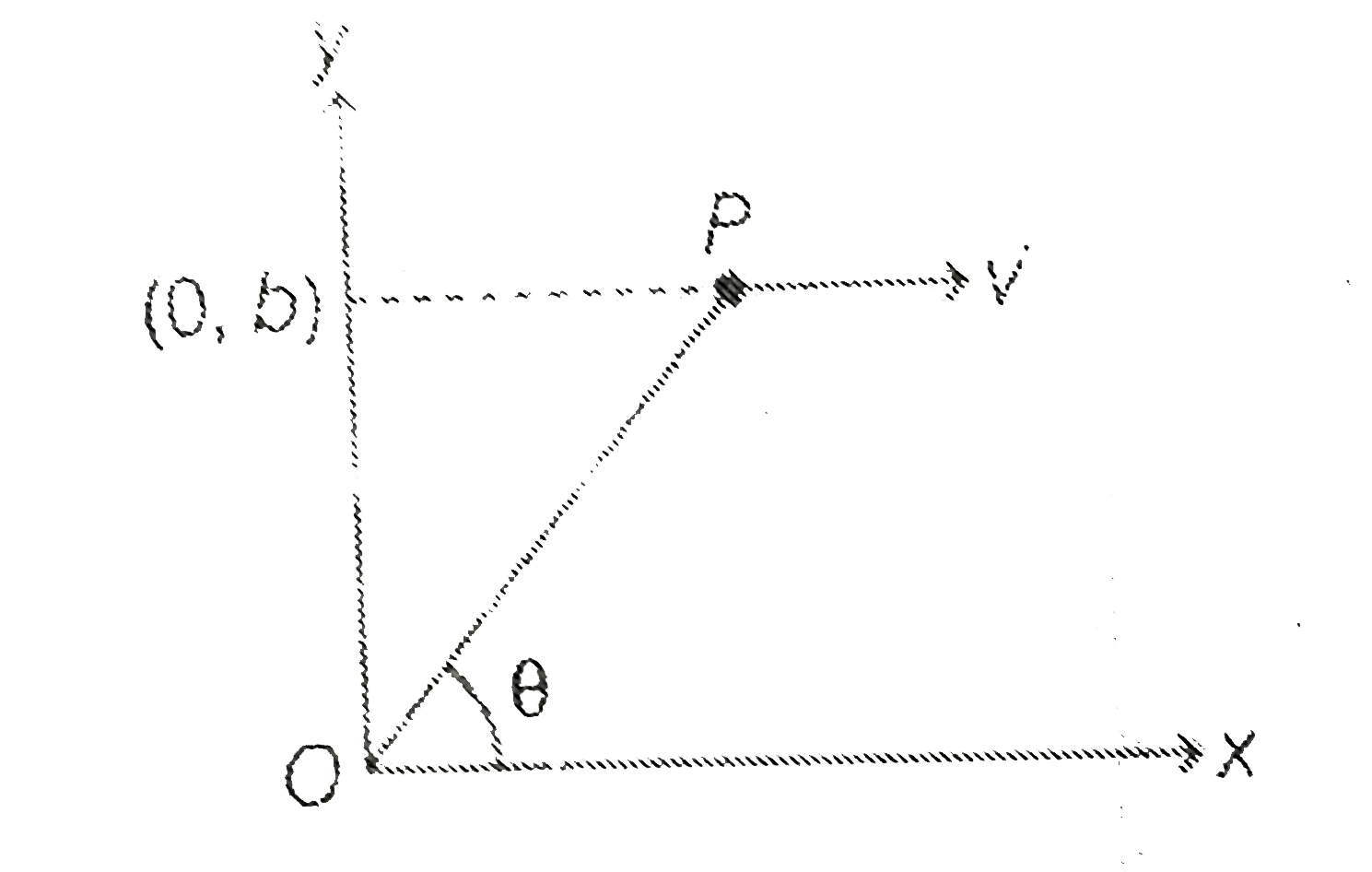Two particles move parallel to x−axis about the origin with same amplitude 'a' and frequency ω. At a certain instant they are found at a distance a/3 from the origin on opposite sides but their velocities are in the same direction. What is the phase difference between the two?
cos−1.79
cos−1.59
cos−1.49
cos−1.19
The correct Answer is:A
Let x1=asinωt and x2=asin(ωt+δ) be two S.H.M.
a3=asinωt and −a3=asin(ωt+δ)
sinωt=13 and sin(ωt+δ)=−13
Eliminating t,13cosδ+√1−19sinδ=−12
9cos2δ+2cosδ−7=0
cosδ=−1or7/9i.e.,δ=180∘orcos−1(7/9)
Now v1=aωcosωt and v2=aωcos(ωt+δ)
If we put δ=180∘. We find that v1 and v2 are of opposite signs. Hence δ=180∘ is not applicable.
∴δ=cos−1(7/9)
Topper's Solved these Questions
- BOOK - NARAYNACHAPTER - OSCILLATIONSEXERCISE - Passage-I2videos
OSCILLATIONS
- BOOK - NARAYNACHAPTER - OSCILLATIONSEXERCISE - Passage33videos
OSCILLATIONS
- BOOK - NARAYNACHAPTER - OSCILLATIONSEXERCISE - LEVEL-V1videos
OSCILLATIONS
- BOOK - NARAYNACHAPTER - NEWTONS LAWS OF MOTIONEXERCISE - PASSAGE TYPE QUESTION6videos
NEWTONS LAWS OF MOTION
- BOOK - NARAYNACHAPTER - PHYSICAL WORLDEXERCISE - C.U.Q10videos
PHYSICAL WORLD
Similar Questions
Two particles execute SHM of same amplitude and frequency on parallel lines. They pass one another when moving in opposite directions each time their displacement is one thhird their amplitude. What is the phase difference between them?
View SolutionTwo particles are in SHM with the same amplitude and frequency along the same line and about the same point. If the maximum separation between them is √3 times their amplitude, what is the phase difference between them?
View Solution
Knowledge Check
- Question 1 - Select One
Two particles executes S.H.M. of the same amplitude and frequency along the same straight line. They pass one another when going in opposite directions, each time their displacement is root three by two times amplitude. The phase difference between them is
A2π3 radBπ2 radCπ6 radDπ3 rad - Question 2 - Select One
A particle is moving parallel to x-axis as shown in the figure. The angular velocity of the particle about the origin is
 A(v/b)sin2θB(v/b)C(v/b)sinθDvbsinθ
A(v/b)sin2θB(v/b)C(v/b)sinθDvbsinθ - Question 3 - Select One
Two particle are in SHM on same striaght line with amplitude A and 2A and with same angular frequency ω. It is observed that when first particle is at as distance A√2 from origin and going toward mean position, other particle is at extreme postion on other side of mean positon. find phase difference betwenen he two paricles.
A45∘B90∘C135∘D180∘
Two waves are propagating with same amplitude and nearly same frequency in opposite direction, they result in
View SolutionTwo particles execute SHMs of the same amplitude and frequency along the same straight ling. They cross one another when going in opposite direction. What is th ephase difference between them when their displacements are half of their amplitudes ?
View SolutionTwo particles are in SHM with the same amplitude and frequency along the same line and about the same point. If the maximum separation between them is √3 times their amplitude, the phase difference between them is 2πn. Find value of n
View SolutionTwo bodies performing S.H.M. have same amplitude and frequency. Their phases at a certain instant are as shown in the figure. The phase difference between them is
_E01_002_Q01.png) View Solution
View SolutionTwo particles execute simple harmonic motion of the same amplitude and frequency along close parallel lines. They pass each other moving in opposite directions each time their displacement is half their amplitude. Their phase difference is
View Solution

